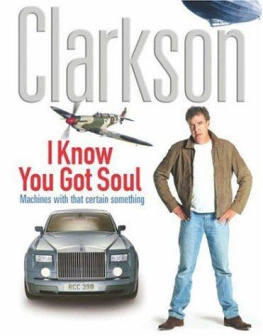747
At lunchtime on 27 March 1977 a terrorist bomb exploded at Las Palmas airport in the Canary Islands. And since there were threats of more bombs in the terminal building, all incoming flights were diverted to the islands other airport at Los Rodeos.
One of the first to land there was Captain Jacob Veldhuyzen van Zanten, aboard a KLM Jumbo. Hed been with the airline for 30 years and was responsible for training other Dutch pilots.
He was ordered by air traffic control to park his 747 on one of the taxiways and wait for Las Palmas to reopen. Suspecting that it might not take long, he initially refused to let the passengers off because then theyd have to be reloaded, and by the time he actually got them to the right place his permitted time in the cockpit would be up, and hed be unable to fly back to Holland. He was so worried about time, in fact, that he asked for the plane to be refuelled while it was parked. This would mean he would have no need to top up the tanks at Las Palmas.
Meanwhile the airport was filling up with other planes, including a Pan Am Jumbo that was bringing a party of old people from Los Angeles to meet their cruise ship in the Canaries. This was being flown by Captain Victor Grubbs, a 57-year-old with 21,000 flying hours under his belt.
His plane was pretty special too, since it was the Clipper Victor, the first Jumbo ever to fly with passengers on board. If you watch the news-reel footage of that first flight, from New York to London on 21 January 1970, this is the plane you will see. And now, seven years later, it was bumbling around a small airport in the middle of the Atlantic looking for somewhere to park.
When Las Palmas finally reopened the Pan Am plane was boxed in by van Zantens KLM plane and its refuelling tanker. The crew actually paced out the gap but figured that while it was close, theyd probably be better off waiting for the Dutch jet to move first.
By the time its tanks were full, at 4.26 in the afternoon, fog had settled on the airport like a big damp blanket and visibility was down to just 300 metres.
Nevertheless, the KLM jet was ordered to taxi down Runway 30 and wait at the far end for clearance to go. Meanwhile the Pan Am plane was ordered onto Runway 30, and to pull off at the third taxiway and wait until the Dutch plane had gone. At this point the fog was so bad that the air traffic controller couldnt see the planes, the Dutch couldnt see the Americans and the Americans werent sure where they were supposed to be going.
Flight-deck recordings show confusion in the cockpit. The first officer thought hed been asked to pull off on the first taxiway impossible since it was a logjam of parked planes. This time the controller was clear: The third one, sir. One, two, three. Third one.
By the time the confusion was cleared up the Americans, still trundling in the pea-souper towards the stationary KLM plane, had no idea how many taxiway turn-off points theyd passed. The black box recorded the captain and first officer trying to decide which was their turn-off. In the event they had missed the third taxiway and were heading for the fourth, all the while getting nearer and nearer to van Zanten.
He, in the meantime, had turned his plane around and was desperate to get going. So desperate, in fact, that he immediately opened the taps on the four engines. First Officer Klaus Meurs plainly sensed this was premature, since he was recorded saying, Wait. We dont have clearance.
Van Zanten immediately applied the brakes and asked his first officer to get on the radio and get clearance. This is what the air traffic controller said: KL4805. You are cleared to the Papa beacon. Climb to and maintain Flight Level 90. Right turn after take-off. Proceed with heading 040 until intercepting the 325 radial from Las Palmas VOR.
These instructions were directions for after the plane had taken off. At no point did the controller actually say they were cleared to go. But van Zanten didnt realise that and released the brakes.
As the plane began to move, towards the unseen Pan Am Jumbo, his first officer repeated the message, as is customary. Roger, sir, we are cleared to the Papa beacon, Flight Level 90 until intercepting the 325. Were now at take-off.
And again there was confusion. The controller took were now at take-off to mean that they were at the take-off position, not that they were actually accelerating at full tilt down the runway towards the Clipper Victor.
On board the Dutch jet were 14 crew and 234 passengers, including 48 children and 3 babies. On board the Pan Am jet there were 16 crew and 396 passengers. Thats a total of 660 people. And they were on a collision course.
As the KLM jet picked up speed its flight officer, Willem Schreuder, heard the tower ask the Pan Am crew to report when theyd cleared the runway.
Assuming, incorrectly, that his captain had heard this too, he said, Did he not clear the runway then?
The reply sealed everyones fate. Oh yes, said van Zanten.
On board the Pan Am plane the first officer was the first to see the KLM jet bearing down on them. There he is, he shouted. Look at him. Goddam. That son of a bitch is coming. Get off. Get off. Get off.
Captain Grubbs was trying. He slammed the throttles wide open but it was too late. At the last moment van Zanten had spotted the Clipper and had tried to get airborne. He made it too but not quite enough; the bottom of his plane hit the roof of the American jet. It burst into flames and smashed back into the runway. Everyone on board was killed instantly.
Aboard the Clipper the first officer reached up after the impact to shut down the howling engines, but the roof on which the switches were located had gone. So too had most of his passengers, in the initial explosion. But miraculously 70 people were pulled out alive, including all the crew of the flight deck.
The total death toll, after nine had died in hospital, was 583, making this the worst accident in the 100-year history of aviation. And therein lies the biggest problem with the 747. When one of them goes down the loss of life is always so horrific no one gives a stuff about the plane itself.
Happily, however, very few are lost. Between 1970 and 2000 1,000 Jumbos were wheeled out of Boeings factory and only 28 have been written off in accidents.
Seven of those accidents happened on the ground while the plane was being manoeuvred, four were down to terrorists, one was destroyed by shelling in the first Gulf War and one was shot down in error by the Russians. So, of the 1,000 made only fifteen have been lost in genuine accidents. And most of those were down to human error.
To get an idea of how tough a Jumbo is, look at that photograph of the decapitated nose cone lying in a field outside Lockerbie. One of the windows is still intact.
To give you a better idea, let me take you back to the first ever incident on a commercial flight. It was 1971, and for all sorts of reasons a 747 was trying to take off with too much weight from a runway at San Francisco that was too short. As it reached 165 knots it ploughed into a timber pier that ran from the end of the runway into the sea.
The steel gantries ripped through the cabin floor, destroyed the wing flaps, bent the landing gear and shattered the bulkheads. Wooden shards scythed through the tail, and through the cabin too, amputating the legs of one passenger and crushing the arm of another. But somehow the pilot managed to get the plane airborne. And even more somehow he managed to land it again. And not a single person was killed.
As a piece of design the 747 is astonishing. I mean, when the TWA Jumbo exploded shortly after leaving New York in July 1996 people assumed it must have been hit by a stray missile or a giant meteorite. The notion that a 747 had actually gone wrong in some way was just too preposterous.













